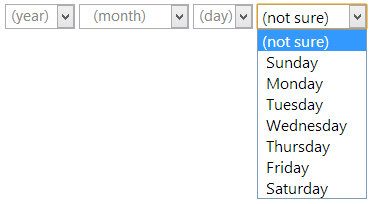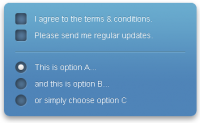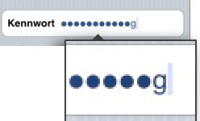aboutWhen - a jQuery plugin for accepting partial or approximate dates

aboutWhen
This is a jQuery plugin for accepting partial or approximate dates.
Calendar controls and their variants are great if you want your users to pick one valid date precisely, but in the case where a user may have incomplete information that you want to capture (for example, "I think it was in May of 1985" or "on a Saturday last month"), you need a control that can accept partial information.
The aboutWhen control creates a separate HTML select element for year, month, day, and day of the week, and balances input between them to try to ensure that the resulting information is consistent.
Usage
-
Include jquery-aboutWhen.min.css in the
<head>element of your HTML page:<link rel="stylesheet" type="text/css" href="./css/jquery-aboutWhen.css" />Or, since this CSS only styles 3 classes and you may want to adjust it for your site, you can just incorporate its content into one of your own CSS files.
-
Then, in the
<body>of your HTML page, place an empty<div>element with its ownidand a class ofhsh-when:<div id="[someDateId]" class="hsh-when"></div> -
At the end of the HTML body, include the jquery-aboutWhen.min.js Javascript file:
<script type="text/javascript" src="./js/jquery-aboutWhen.min.js"></script> -
Finally, apply
aboutWhento everything of classhsh-when:<script type="text/javascript">$(".hsh-when").aboutWhen( );</script>
The result is a set of 4 <select> elements in your page:
These elements have name and id attributes created from the id of the parent div as follows:
year: [parent div's id]_y
month: [parent div's id]_m
day: [parent div's id]_d
weekday: [parent div's id]_w
Similarly, the corresponding label elements have the following id attributes:
year: [parent div's id]_yL
month: [parent div's id]_mL
day: [parent div's id]_dL
weekday: [parent div's id]_wL
When you open one of the select elements (here the weekday one), it looks like something like this:
Options
You can also call aboutWhen with a settings or options parameter (I prefer "settings" here so as not to confuse them with select element options). Below are the possible fields in a settings parameter, containing the values that aboutWhen uses by default:
{
maxY : undefined, /* If maxY is undefined, the current year is used. */
minY : 1900,
widths: [ "80px", "120px", "70px", "125px" ],
text : {
Nm: [ "(year)", "(month)", "(day)", "(weekday)" ],
Mo: [ "January", "February", "March",
"April", "May", "June",
"July", "August", "September",
"October", "November", "December" ],
Wd: [ "Sunday", "Monday", "Tuesday", "Wednesday",
"Thursday", "Friday", "Saturday" ],
ns: "(not sure)"
}
}
Each of the 4 top-level settings fields is optional, but any one you include MUST be complete. For example, if you pass in a settings parameter containing a text field, the text field MUST contain a Nm array of 4 label names, a Mo array of 12 month names, a Wd array of 7 weekday names, and an ns string for the "not sure" option.
You might also like
Tags
accordion accordion menu animation navigation animation navigation menu carousel checkbox inputs css3 css3 menu css3 navigation date picker dialog drag drop drop down menu drop down navigation menu elastic navigation form form validation gallery glide navigation horizontal navigation menu hover effect image gallery image hover image lightbox image scroller image slideshow multi-level navigation menus rating select dependent select list slide image slider menu stylish form table tabs text effect text scroller tooltips tree menu vertical navigation menu

 Subscribe
Subscribe Follow Us
Follow Us 11 years ago
11 years ago 5533
5533 1420
1420



